#十字髻/Cross-shaped hairstyle
Photo









【Artifact Reference】:

[Hanfu・漢服]China Wei and Jin Dynasties Traditional Clothing Hanfu,Hairstyle & Makeup
【History Note】
The makeup and hairstyle of the Wei and Jin Dynasties, on the basis of inheriting the heavy makeup and the high bun hairstyle in the Eastern Han Dynasty, developed various exaggerated “Ring Shape hairstyle/环髻”, “Cross-shaped hairstyle/十字髻” , as well as face makeup such as rouge and XieHong/斜红( a special kind of face decoration in ancient times, is a red crescent is drawn on both sides of a woman’s face ) with different dyeing techniques. The overall effect is very attractive and also laid the foundation for the popular development of makeup and hairstyles in the following dynasties.
————————
Recreation Work: @裝束复原 & @桑纈
🔗Weibo:https://weibo.com/3572594885/MbwYD19Iy
————————
#Wei and Jin Dynasties#chinese hanfu#十字髻/Cross-shaped hairstyle#Ring Shape hairstyle/环髻#hanfu#historical clothing#chinese historical fashion#chinese traditional clothing#historical hairstyle#historical makeup#chinese history#China History#Chinese Costum#Chinese Culture#XieHong/斜红#魏晋半袖襦裙装束#裝束复原#桑纈#漢服#汉服
231 notes
·
View notes
Text
April 11, Xi'an, China, Xi'an Museum/西安博物院 (Part 2):
First up, the star of the museum, Tang dynasty (618 - 907 AD) sancai/唐三彩 pottery figurine of a rider on a horse (三彩腾空马):


More Tang-era sancai pottery horse figurines:



This one is a sancai figurine of a camel......screaming? That's a reaction pic worthy face right there:

Another reaction pic worthy face.....this time on a small gold tiger figurine (the head looks more like a bat tbh lol):


Qin dynasty (221 - 207 BC) kneeling clay figurine. This is how people sat before raised seats and chairs became a thing, and this position is called jizuo/跽坐:

Bronze parts from a horse chariot (because the chariots were wooden, it decayed, leaving behind these bronze parts):

Left: bronze crossbow (called nu/弩) trigger mechanism and arrow heads (may be from Warring States period, 403 - 221 BC)
Right: Bronze swords and daggers. If I remember right, the ones on the bottom left are yue/钺 heads


Qin dynasty (221 - 207 BC) and Han dynasty (202 BC - 220 AD) wadang/瓦当, featuring various auspicious motifs and phrases. These are part of the roof edge in traditional Chinese architecture, as shown in the diagram on the right (wadang is on the bottom left in the diagram). Honestly I think at least some of these wadang designs can be used on mooncake moulds:


A golden loong dragon, very fitting for the Year of the Dragon 🐉:

A (giant) pottery brick decorated with two loong dragons:

A pottery lantern, I believe this is specifically made to be buried in a tomb

Green-glazed pottery dog from Han dynasty (202 BC - 220 AD). It's speculated that this actually depicts a songshi/松狮 dog, which was the breed that the chow chow was developed from. Note the wide head, small upright ears, sturdy protruding snout, stocky build, and the tail curved onto its back. This breed can still be found in China today:

Left: pottery female figurines, probably from Wei, Jin, Southern and Northern dynasties/魏晋南北朝 (220 - 589 AD), since this cross-shaped hairstyle/十字髻 was one of the characteric hairstyles of that time period.
Right: pottery female entertainer figurines, judging by the hairstyles, these are probably from Tang dynasty (618 - 907 AD). The hairstyle of the musicians to the sides are banfanji/半翻髻, the musician to the left is playing a sheng/笙, while the musician to the right is playing a paixiao/排箫. The dancer in the middle has a feixianji/飞仙髻 hairstyle.


Tang-era bronze mirror decorated with auspicious creatures and grapes. Traditionally, grapes motif symbolize longevity and wealth. This is the back of the mirror, the other side is the actual mirror, which is polished frequently and meticulously so that it may serve its purpose.

Various Tang-era hair ornaments made of silver, gold, or jade:

Tang-era sancai pottery tomb guardians:

Northern Zhou-era (557 - 581 AD) stone sarcophagus from Tomb of Master Shi/史君墓, also known as Tomb of Wirkak, dating from 580 AD:

A close up at the epitaph on the sarcophagus, which is written in Chinese and Sogdian. Translation of the epitaph from Wikipedia:
(The period) Daxiang of Great Zhou, year 2, in the first month of a rat year, on the 23rd day. So: there was a man of a family from Kish, domiciled in Guzang. From the emperor he holds the rank (of) sabao of Guzang, in the land of the Sogdians, a landowner. He is named Wirkakk, the son of Wanuk, (namely) Wanuk, the son of the sabao. And (his) wife, born in Xinping, is named Wiyusi. And Wirkakk the sabao married (his) wife in Xinping in a pig year, on the 7th day of the 6th month, on a hare day. And afterwards, here in Xianyang (= Chang’an), he himself died in a pig year, on the 7th day of the 5th month. And his wife too died on the 7th day of the 6th month, on a hare day, in the same year (as her) marriage, the same month, the same day. There is no living being which is born which is not subject to death; moreover, it is hard to complete (one’s) period in the world of the living. But this is harder (still), that, without being aware (of it), a husband and wife see one another (for the first time) the same year, the same month, the same day, in the human world (and) also in paradise, (so that) the beginning of (their) life together (in each place) may be at the same period. This stone tomb was made by Vreshman-vande, Zhimat-vande (and) Prot-vande, desiring a suitable place for (their) father (and) mother.
— Epitaph of the tomb of Wirkak. Translated from the Sogdian by Nicholas Sims-Williams.

A clay model of a building for burial, if I remember right this is from Ming dynasty (1368 - 1644), I'm not 100% sure.
Traditionally, Chinese people believe that spirits of the dead will continue to exist and "live", so the dead must be treated as if they are alive, a concept known as 事死如事生. This is why ancient Chinese tombs were often filled with belongings of the deceased, their favorite and most prized treasures, and (often clay) models of houses and possessions, etc. A very famous example of this is Qin Shi Huang's terra cotta army. This is also why Chinese people today still burn paper offerings in the shape of money (mingbi/冥币; colloquially called paper money/纸钱) and items (called zhizha/纸扎) for the deceased. The biggest difference is that today's paper offerings might take the shape of modern items like laptops or cars.

Ming-era pottery figurines, arranged in a procession

A landscape painting hand scroll, and if I'm reading the plaque right (there were a lot of people so I didn't get to take a picture of the plaque), it's by famous Yuan dynasty painter Zhao Mengfu/赵孟頫 (1254 - 1322). This particular style of landscape painting is called blue-green landscape painting (青绿山水画), and is so named for its characteristic blue-green color of the mountains. Since the color was produced by mineral pigments, it's long-lasting and does not fade. The most famous painting of this style is One Thousand Li of Rivers and Mountains (《千里江山图》) by Wang Ximeng/王希孟 in Northern Song dynasty (960 - 1127 AD).

And last but not least, this one surprised me too......clay water pipes from Qin dynasty (221 - 207 BC):

#2024 china#xi'an#china#chinese history#chinese art#chinese painting#history#art#archaeology#xi'an museum#西安博物院
80 notes
·
View notes
Photo



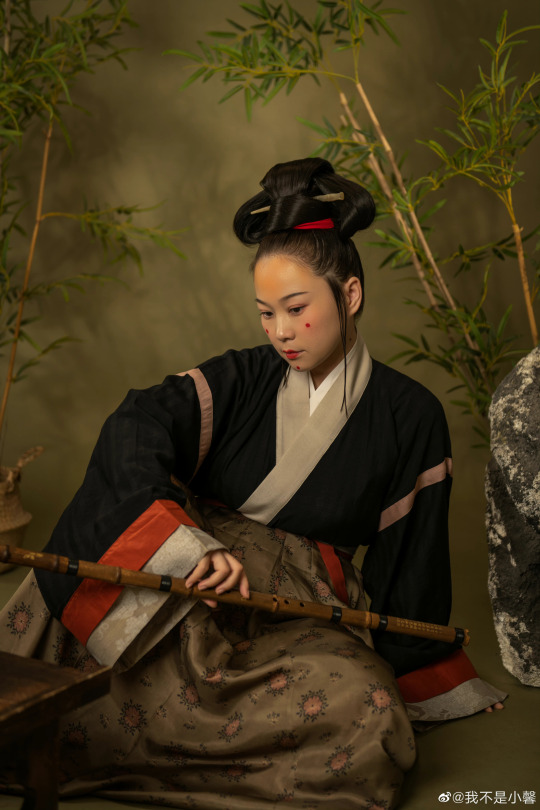

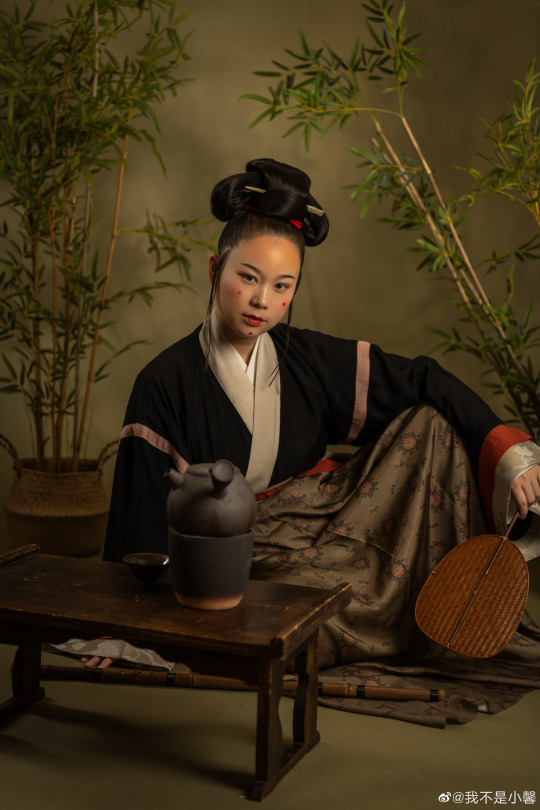

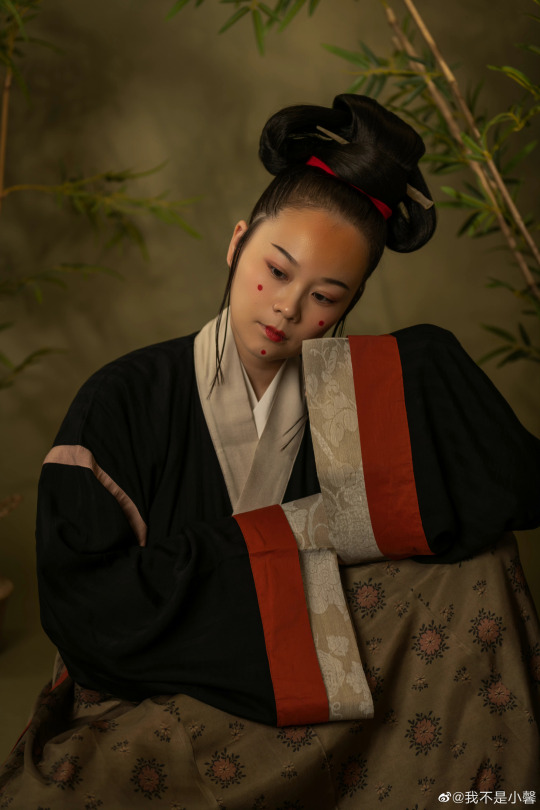
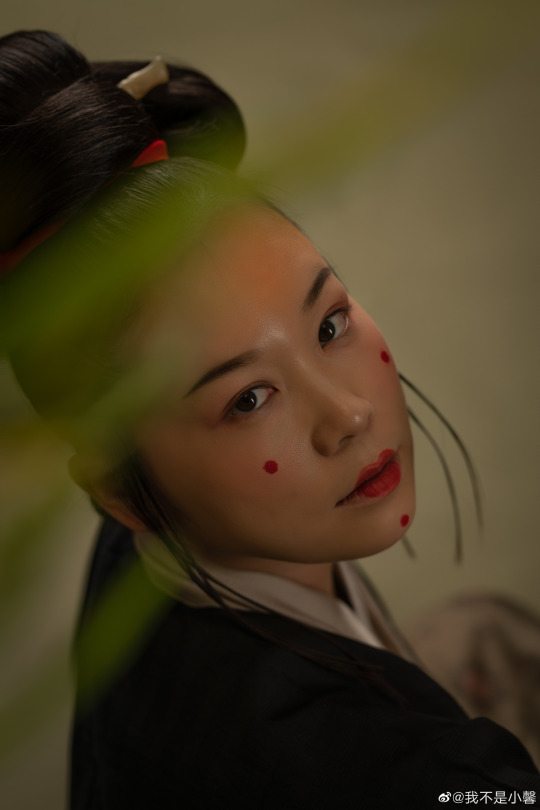
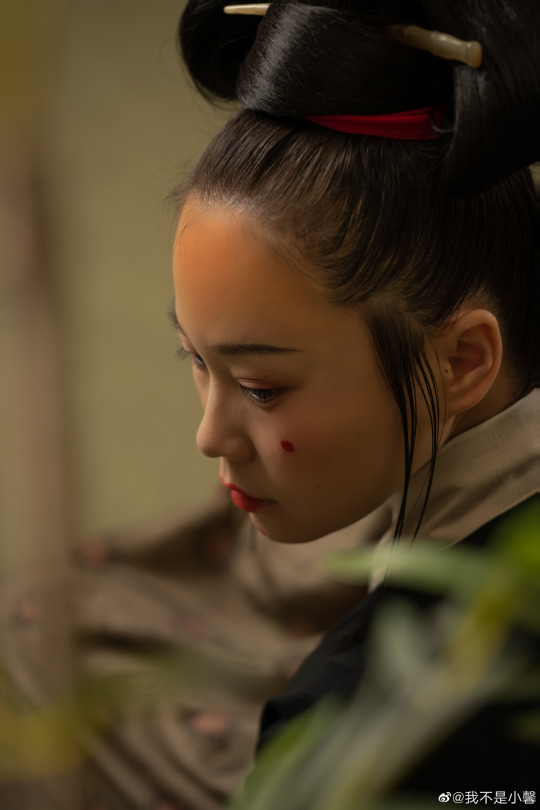
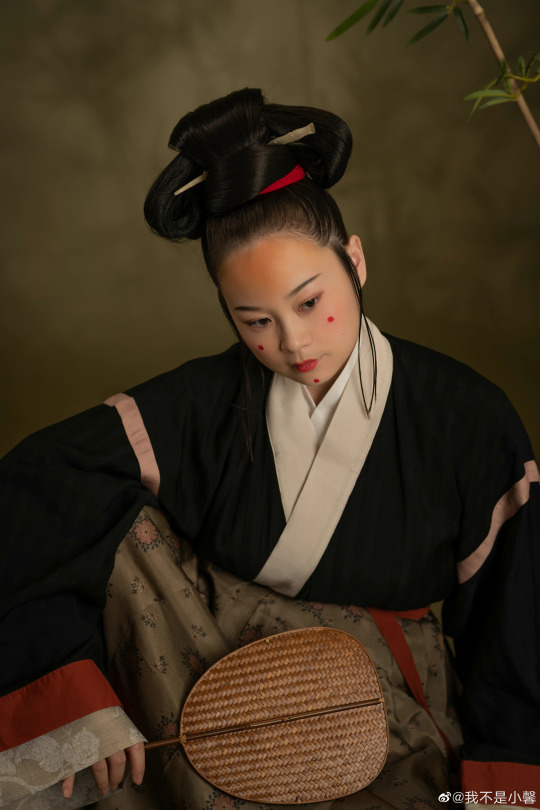
【Reference Artifacts】:
・ Figures of female musicians unearthed from the Tomb of the Sixteen Kingdoms in Pingling Township, Xianyang:
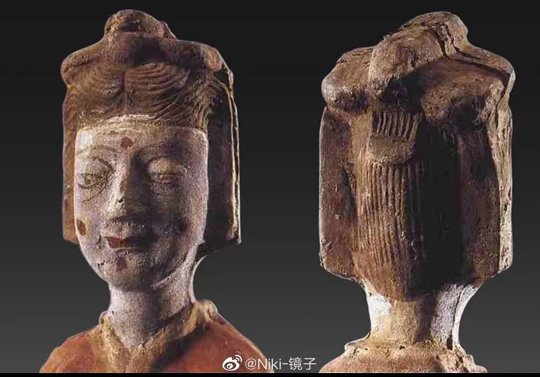
・Eastern Jin Dynasty Female Pottery Figurines:

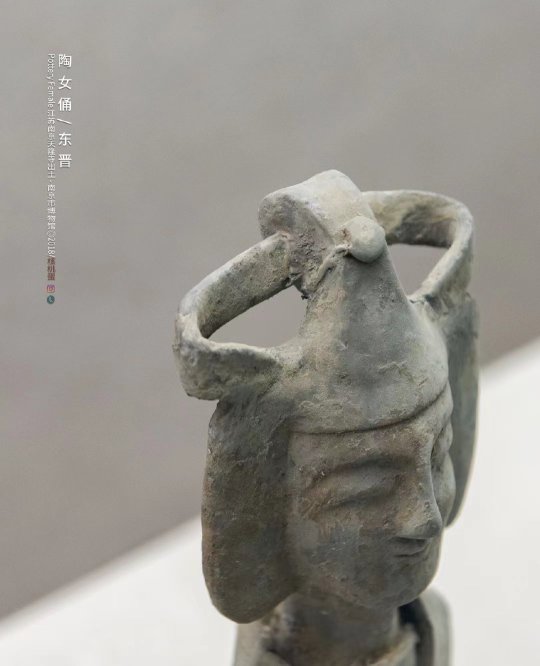
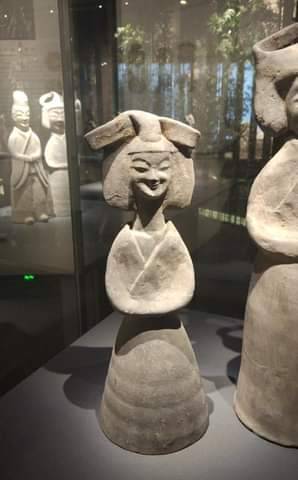
・Northern Wei Dynasty・Cross-shaped hairstyle female figurines

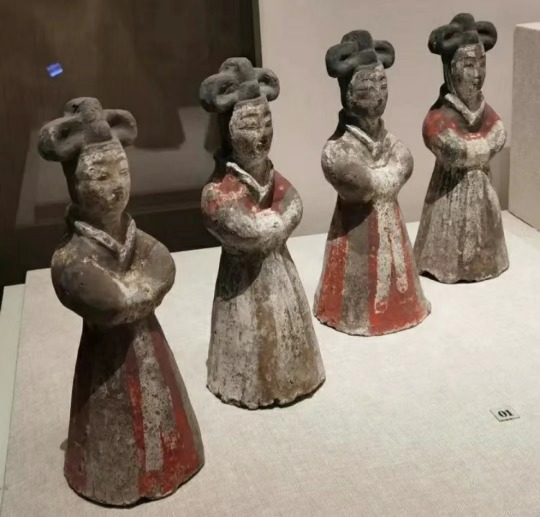
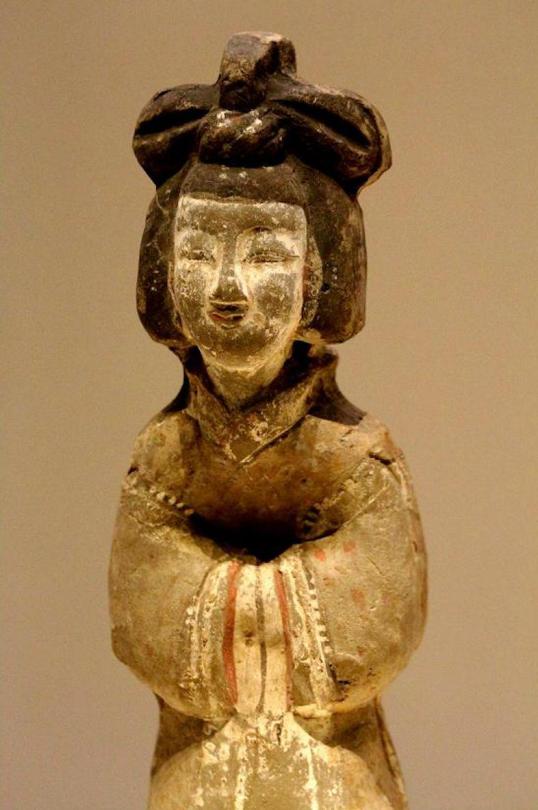
[Hanfu · 漢服]China Wei & Jin Dynasties & Northern and Southern Dynasties Traditional Clothing Hanfu & Hairstyle Based On Relics
--------------
【About“ 十字髻/Cross-shaped hairstyle ”】
The “十字髻/ Cross-shaped hairstyle” is a type of hairstyle that is named for its " 十 (Chinese character “ten”)" shape.
Popular in the Wei, Jin, Southern and Northern Dynasties. After the Wei, Jin, Southern and Northern Dynasties its was rarely seen in other dynasties
_______
📸Photo :@糖拌凶柿
🧚🏻 Model: @我不是小馨
💄 Makeup: @十睿·CHEN
🔗Weibo:https://weibo.com/6929988517/M7ZBl5Ely
_______
#Chinese Hanfu#Wei & Jin Dynasties#Northern and Southern Dynasties#十字髻/Cross-shaped hairstyle#hanfu#historical clothing#historical hairstyles#historical fashion#chinese history#China History#Chinese Costume#Chinese Culture#糖拌凶柿#我不是小馨#十睿·CHEN
162 notes
·
View notes